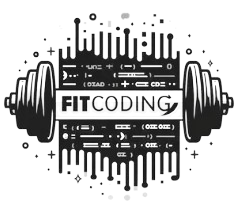Digital transformation is often the most overused word in the IT industry. Still, its importance has become greater with every passing day.
Organizations strive to modernize legacy processes, introduce customer-friendly interfaces, and stay relevant in rapidly shifting markets. This constant push for innovation can feel daunting without the right people and skill sets in place.
IT resource and staff augmentation is emerging as a prime resource to keep these projects on track. It allows companies to bring specialized expertise on board quickly, avoiding the bottlenecks and delays that hamper transformative efforts.
What is Digital Transformation?
Digital transformation involves reimagining business operations and customer interactions by using advanced technologies. It can mean shifting from manual systems to automated platforms or introducing smart applications that offer real-time analytics. Decision-makers often see this journey as a stepping-stone to stronger competitiveness and better customer satisfaction.
At its core, digital transformation transcends a mere software upgrade; it’s about cultivating a mindset that embraces change and continuous improvement. Companies that pursue it aim to stay nimble, adaptable, and ready for next-generation market demands.
The Growing Need for IT Staff Augmentation
While digital tools can supercharge operations, not every organization has the necessary skill sets in-house to deploy them effectively. Traditional hiring methods often drag out as you search for talent, meaning digital initiatives can stall. In a marketplace that rewards agility, lost time can have real consequences for both market share and profitability.
IT staff augmentation meets this challenge by offering an agile way to integrate experts who bring fresh ideas, without the overhead of long-term employment. This approach helps companies fine-tune their project teams so they can effectively adopt emerging tech.
This blog will explore how IT staff augmentation fuels digital transformation by bridging skill gaps, adding flexibility to project teams, and ensuring critical deadlines are met. Readers will gain insights into why this staffing model aligns so well with modern organizational needs. We’ll also examine how quick scalability, diverse skill sets, and reduced hiring burdens combine to drive forward-looking change.
By the end, you’ll see how strategically applied staff augmentation can shift digital initiatives from concepts on a planning board into dynamic, real-world achievements.
2. Understanding Digital Transformation
Digital transformation, at its most basic, is an evolution in how companies use technology to thrive in a competitive environment. Organizations that embrace digitization rethink everything from supply chain logistics to customer support. With each change, they aim to cut costs, improve efficiency, or enhance client satisfaction.
However, the path is rarely smooth. Established workflows can clash with forward-thinking methods, creating tension among teams. That’s why many leaders look for innovative staffing arrangements that bring specialized expertise alongside the existing workforce.
Key Drivers of Digital Transformation
Customers today expect faster response times, personalized communication, and streamlined online platforms. Rapid technological advancements also encourage businesses to upgrade tools and workflows constantly. Emerging software solutions, from analytics to security, open new possibilities for data-driven decision-making.
Market competition drives companies to adopt transformative technologies before rivals do. Even regulatory requirements can prompt digital initiatives, especially when compliance calls for robust systems. These forces together make it difficult for in-house teams alone to tackle every new technical demand.
Common Challenges in Digital Transformation
One significant hurdle is the inertia of legacy systems, which often limits how easily new solutions can be integrated. Another is the cultural resistance that arises when employees feel uneasy about changes to familiar roles or technologies. Finding the right talent can also become a stumbling block, especially if you lack the resources to train staff for novel platforms.
Budget constraints add to the complexity, as leaders juggle immediate needs against investments for the future. Frequently, these challenges intersect, creating a multifaceted web of issues that stall meaningful progress.
3. The Role of IT Staff Augmentation
IT staff augmentation places skilled experts into your organization on a temporary basis to address specific gaps. Rather than replacing the entire workforce, it seamlessly complements current teams, empowering them to complete projects more efficiently. This model is especially useful when deploying new digital platforms or tools that might otherwise demand extensive training.
By blending in external professionals who already possess niche competencies, businesses can accelerate project timelines. Companies benefit from targeted support without taking on the long-term expenses that accompany permanent hires.
Definition and Benefits of Staff Augmentation
Staff augmentation provides an adaptable way to acquire specialized talent for a set duration. Companies pay for the expertise they need without incurring typical overhead costs, such as benefits or extensive onboarding. This approach removes time-consuming hiring procedures and allows leaders to adjust staffing levels on demand.
Organizations also retain full control of projects, as the augmented professionals work under existing management. Combined with cost-efficiency and targeted skill sets, this setup can transform how quickly organizations meet digital objectives.
How Staff Augmentation Supports Digital Initiatives
Augmented staff can step in to manage complex software deployments or optimize network infrastructure for modern workflows. Their presence takes the pressure off internal teams, allowing daily operations to continue without stress. By allocating specific tasks to these external pros, leaders can ensure each facet of the project receives expert attention.
Because these professionals are vetted for the very abilities your initiative needs, tasks often move forward with fewer hiccups. Ultimately, that translates into a smoother process from planning to launch, aligning perfectly with agile methodologies common in digital transformation.
4. Access to Specialized Skills
Sourcing experienced data architects, cloud engineers, or AI specialists can be extremely time-consuming. Traditional recruitment may require months of searching, followed by lengthy negotiations and onboarding. Staff augmentation streamlines this process, granting quick access to a roster of seasoned professionals.
This approach proves pivotal when tackling emerging technologies that demand deep domain knowledge. By onboarding staff who have already implemented these solutions elsewhere, you sidestep many trial-and-error pitfalls. The result is a more immediate and confident approach to ambitious digital projects.
Bridging Skill Gaps
Even robust IT departments can lack certain specialties essential for a project’s success. Staff augmentation bridges those gaps without committing to full-time hires. This solution is especially handy for short-term engagements where the required skill sets might not be continuously needed.
Businesses can optimize their teams’ composition, ensuring that each segment of a digital transformation project has the right level of expertise. In turn, bottlenecks are minimized, and timelines are less likely to slip off track.
5. Enhancing Flexibility and Scalability
Change has become the norm in the digital age, and project scopes frequently shift. Leaders can’t always predict how many developers, data analysts, or UX specialists will be necessary at each stage. Staff augmentation excels in these circumstances, allowing quick adjustments to the size or skill mix of a project team.
This model keeps budgets in check by adding or releasing external talent as needed. Companies don’t need to maintain large permanent teams that might be underutilized at various times. Instead, they rely on agile staffing that scales in harmony with business realities.
Adapting to Market Changes
New trends often prompt product refinements or expansions. When a major update is warranted, staff augmentation lets you quickly bring on additional talent to accelerate feature development. On the other hand, if the market cools or your product roadmap shifts, you can scale down just as easily.
This flexibility makes a tangible difference in remaining competitive. Organizations can respond to shifting consumer preferences without lengthy hiring processes bogging them down.
Mitigating Resource Constraints
When senior leaders map out digital initiatives, resource constraints frequently stand in the way. Deadlines can stretch if not enough skilled professionals are available at the right time. By adopting staff augmentation, businesses can avoid those pinch points, plugging gaps whenever they surface.
This system also lightens the administrative load associated with juggling multiple simultaneous endeavors. No one wants to halt a promising project just because a key role remains unfilled for weeks or months. Staff augmentation offers a clear workaround for such scenarios.
6. Accelerating Project Timelines
Speed matters in today’s connected world, where customers crave fresh features and seamless digital experiences. Deploying a new platform or upgrading infrastructure can’t afford to drag on forever. IT staff augmentation supplies the immediate manpower to launch or improve products at a robust pace.
This arrangement is particularly valuable when you’re racing a competitive market. By matching external specialists to specific tasks, your internal workforce can maintain momentum on existing responsibilities. Together, these teams shape a forward path that helps meet deadlines more reliably.
Faster Time-to-Market
Businesses that continually adopt and refine digital tools tend to gain a major edge. Releasing a polished platform or feature set faster can capture the attention of users who crave novelty. Being among the first to deliver high-quality digital offerings can also define your brand as innovative and proactive.
Staff augmentation lifts barriers to a swift release by ensuring each role is adequately filled. Relying solely on in-house staff may lead to overloaded schedules or crucial knowledge gaps that slow progress.
9. Future Trends Influencing Digital Transformation
Digital transformation continues to evolve as businesses chase new frontiers. Globalization, remote collaboration platforms, and artificial intelligence are influencing how swiftly organizations can launch or scale their offerings. Each new wave of technology creates fresh skill requirements that may not fit neatly into existing teams.
In response, staffing providers are refining how they match talent with projects, relying on data-driven insights to streamline placements. The result is a more precise alignment of expertise and project goals, which can be a catalyst for faster digital progress.
Emerging Technologies Impacting Staff Augmentation
AI-driven algorithms already help firms pinpoint the right professionals who can tackle specific technical requirements. As these matching systems grow more sophisticated, the speed of assembling skilled teams will likely increase even further. Meanwhile, secure virtual collaboration tools allow global talent pools to come into play.
This global reach enables companies to find niche experts, no matter where they’re located. In an era where specialized knowledge is often distributed worldwide, tapping into that resource pool is a major benefit of staff augmentation.
The Role of Continuous Learning
Technologies evolve at an accelerating pace, so even seasoned experts must keep refining their abilities. Continuous learning programs, workshops, and certifications ensure that augmented staff remain effective in their roles. Organizations that promote professional development create a future-ready environment where adopting emerging solutions is a natural progression.
This cycle of growth benefits both parties: augmented professionals expand their career horizons, and businesses gain a stronger, more versatile workforce. It also helps maintain a vibrant culture where innovation is encouraged rather than feared.
Wrapping it up
As organizations seek to thrive in a digitally driven world, IT staff augmentation has become a potent solution. It pairs perfectly with an era of constant evolution, delivering critical expertise on demand while minimizing overhead.
Digital transformation isn’t just about upgrading software; it’s about embracing a mindset of innovation and agility. Staff augmentation supports that shift by infusing teams with fresh skills whenever they’re needed most. With the right strategy and technology partner like Devsinc, you can capitalize on emerging technologies and stay ahead of the curve, ensuring progress without unnecessary complications.
Leaders who weave staff augmentation into their long-term vision often discover a harmonious blend of talent, efficiency, and adaptability. Ultimately, this model fuels forward momentum, giving businesses the edge they need to thrive in the modern marketplace.











